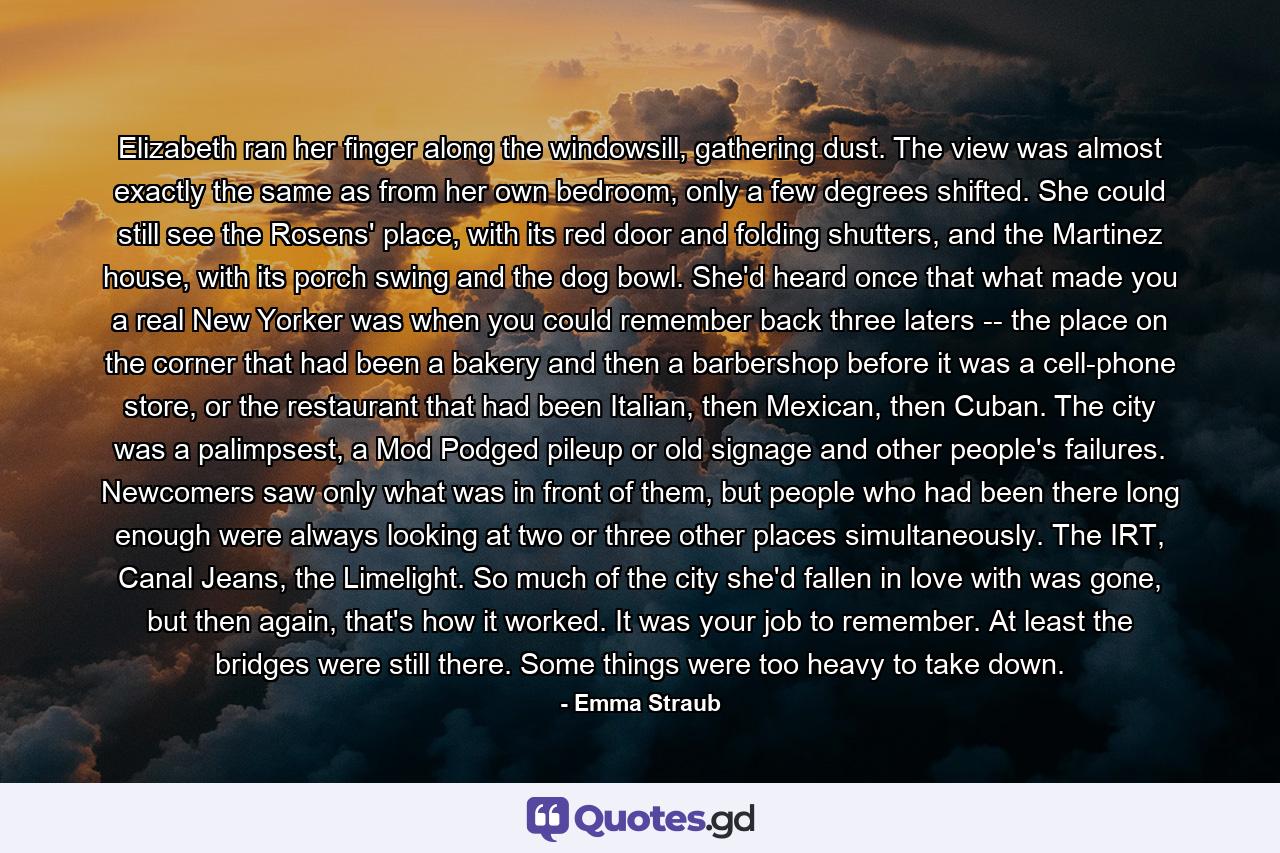Elizabeth ran her finger along the windowsill, gathering dust. The view was almost exactly the same as from her own bedroom, only a few degrees shifted. She could still see the Rosens’ place, with its red door and folding shutters, and the Martinez house, with its porch swing and the dog bowl. She’d heard once that what made you a real New Yorker was when you could remember back three laters — the place on the corner that had been a bakery and then a barbershop before it was a cell-phone store, or the restaurant that had been Italian, then Mexican, then Cuban. The city was a palimpsest, a Mod Podged pileup or old signage and other people’s failures. Newcomers saw only what was in front of them, but people who had been there long enough were always looking at two or three other places simultaneously. The IRT, Canal Jeans, the Limelight. So much of the city she’d fallen in love with was gone, but then again, that’s how it worked. It was your job to remember. At least the bridges were still there. Some things were too heavy to take down.
